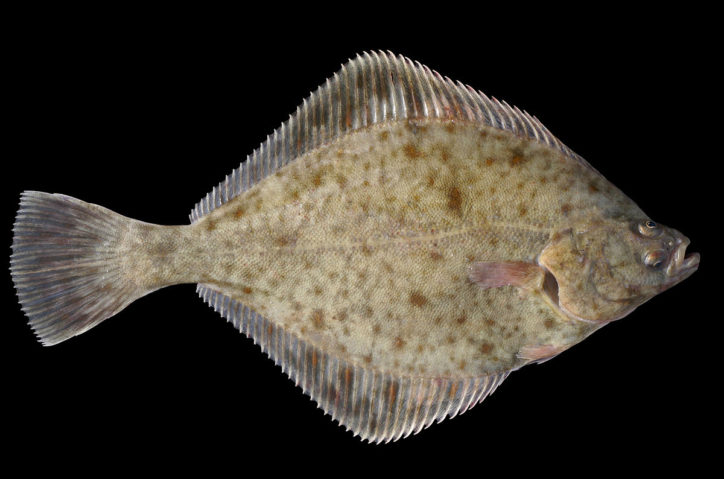Fish of the Platichthys genus of the Pleuronectinae subfamily of the Pleuronectidae (righteye flounders) family of the Pleuronectoidei suborder of the Pleuronectiformes (flatfishes) order of the Acanthopterygii superorder.

(European flounder. Photo by © Tiit Hunt. en.wikipedia.org)
European flounder (Platichthys flesus) was first described in 1758 by the Swedish scientist Carl Linnaeus (1707 – 1778).
It lives at the depth of 1-100 meters. It is the actively migrating fish that comes from the sea to rivers and lakes. Often, it can be found near the mouths of the rivers, in the estuaries, or on bays near the muddy and sandy bottom. The maximum recorded length is 60 cm; specimens up to 50 cm long are usually observed. The maximum weight is 2.9 kilograms. It feeds on small fish and invertebrates.

(European flounder. Photo by © Hans Hillewaert. en.wikipedia.org)
It is a permanent inhabitant of the Adriatic Sea and freshwater bodies of Albania, Bosnia and Herzegovina, Italy, Slovenia, Croatia, and Montenegro.
Names of European flounder (Platichthys flesus) in other languages are as follows:
Shojza (Albanian), Писия (Pisija) (Bulgarian), Érdes lepényhal (Hungarian), Bot (Dutch), Φασί (Fasi) (Greek), Flunder (German), Platija europea (Spanish), Passera (Italian), Stornia (Polish), Solha-das-pedras (Portuguese), Cambulă (Romanian), Речная камбала (Rechnaja kambala) (Russian), Iverak (Serbian, Croatian), Iverka (Slovenian), Pisi balığı (Turkish), Flet d’Europe (French), Platýs bradavičnatý (Czech).